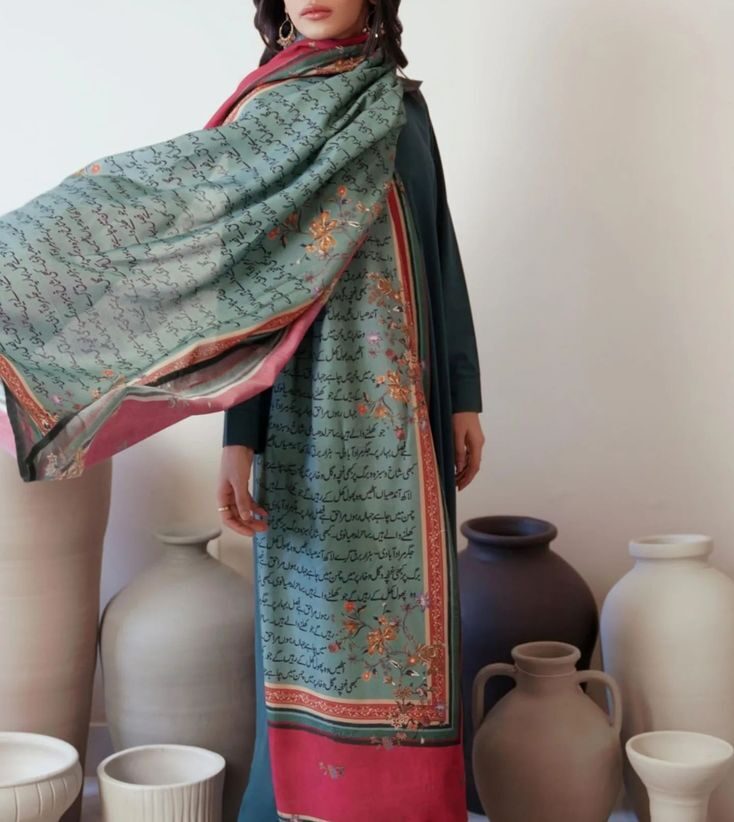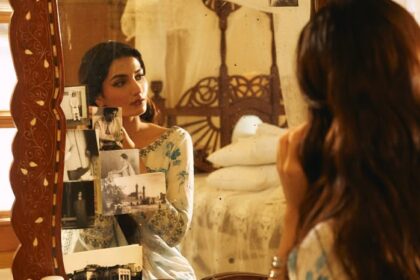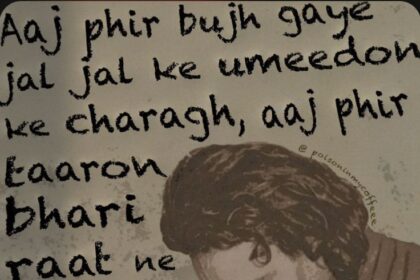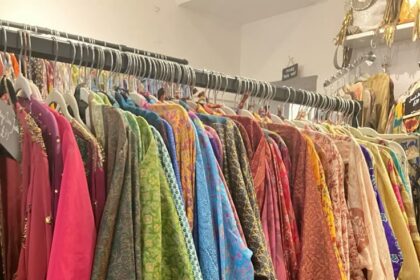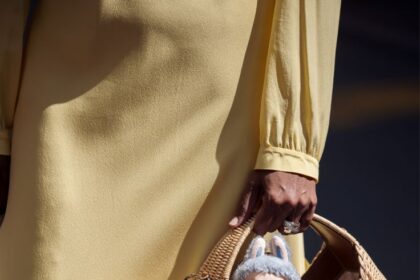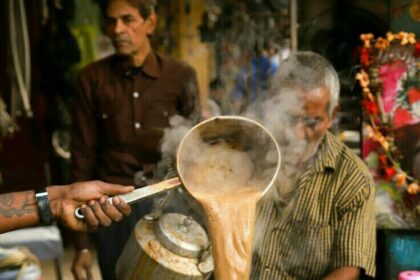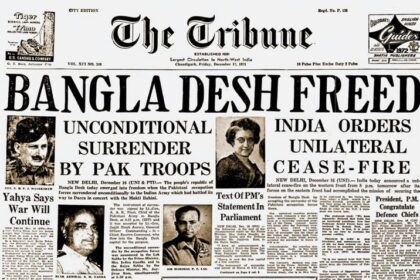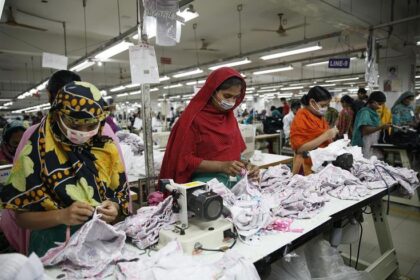Something is intriguing about browsing through the carefully curated collection of a fashion brand. You come across pieces that invoke a sense of cultural pride and prestige—expensive, delicate clothes adorned with quotes from Ghalib or Faiz Ahmed Faiz. Maybe a shimmering dupatta decorated with truck art catches your eye, or a pair of earrings that claim to evoke the richness and history of the Mughal era. These items, decorated and presented as the ultimate paragons of cultural innovation, are very alluring at first sight. One can’t help but indulge a little bit and seek out these tokens of cultural pride and celebration. But behind the carefully curated facade of a well-designed website or an aesthetic Instagram feed, do these fashion brands value and celebrate the culture that they seem to be taking inspiration from? What does “cultural inspiration” even mean in an industry that is rife with waste, fast-paced changes, and fleeting trends?
If we are to put fashion and culture together, we can’t help but recognise the glaring differences between the two. Modern fashion is almost transient and temporary; the industry runs on the high of chasing the latest trends and hot topics. What is considered popular and desirable one moment is quickly discarded for another theme, branding, or aesthetic. The fashion industry is fleeting and always changing, which is the antithesis to how culture exists in the world.
For many, culture is not a short-term fad that comes and goes on the whim of a disenchanted and detached populace. Culture has roots; it is grounded and permanent. Pakistani culture cements itself into the crevices of history, language, and art because this is all that we have as a nation. Culture is meant to last a long time and leave an impression that lasts even longer, but using this culture on a cheaply made t-shirt or a quirky tote bag says something entirely different. Moving from truck art to Mughal art to Urdu poetry as the basis of inspiration for fast fashion is almost insulting in a way because, at the end of the day, it says nothing.
People can buy these pieces and wear them for exclusive events or a fancy dinner. They may even receive compliments for their taste. They may be perceived as being very worldly and intellectual. But these processes are meaningless because the culture loses its value in a capitalist-fuelled, privileged bubble. A rich patron recognising Juan Elia’s words on a Shalwar Kameez in a gathering full of other rich, privileged individuals means nothing. These clothes are curated not for the masses but for the select few who can boldly wear these statement pieces and get away with it. The Mughal-inspired clothing finds its way into gatherings where speaking English is the only way to communicate. But it disregards the years of colonial rule that dismantled the Mughal Empire. If anything, culture is always at odds with the type of fashion that claims to be celebrating culture.
The crux of the issue also lies in the distance between fashion brands and the majority of the nation. It’s not a crime to take inspiration from the country’s rich culture, but when this inspiration is limited only to one demographic and one social class, the flaws start to rear their ugly head. A lot of people cannot afford this fashion to begin with. A large majority of the nation does not even have access to Instagram or the privilege to use the internet. They remain in the shadows, silently celebrating Pakistan’s culture in their way. Maybe some of them have memorised Ghalib’s poetry by heart. Maybe a young artist has taken up the paintbrush and is meticulously trying to create beautiful truck art in the hopes of making it big. These actions are small but hold a lot more worth when it comes to how culture influences and shapes us.
Wearing trendy cultural pieces is not a crime, but it is silent with no meaning. I doubt Manto would have appreciated that his words, which spoke to the troubled and disenfranchised, are now being printed on a piece of cloth that will be sold for thousands of rupees. I doubt any of the poets, artists, or cultural icons that have been used for fast fashion would look upon this industry with approval.
The thing about Pakistan’s culture is that most of it is built up by the overlooked and isolated part of the nation and its history. The unrecognised artists behind truck art, the poets who were ostracised for speaking the truth, and the Mughal artisans who tried to preserve their traditions against the onslaught of colonial rule. Pakistan’s culture is built on the backbone of people who tried their best to preserve culture and history through any means necessary. Reducing this culture to niche t-shirts or expensive Eid collections takes away the essence of what Pakistan’s culture truly represents.
Fashion does not have to be soulless or entirely void of any inspirations, but when you find yourself adding those enticing Mughal-inspired earrings to your cart, just remember that this moment was crafted by the unique voices throughout Pakistan’s history who used their art to keep the nation’s history and culture alive. And because of them, we get to proudly show off the Urdu poetry printed on a dupatta or the truck art memorialised on the back of an expensive jacket.






